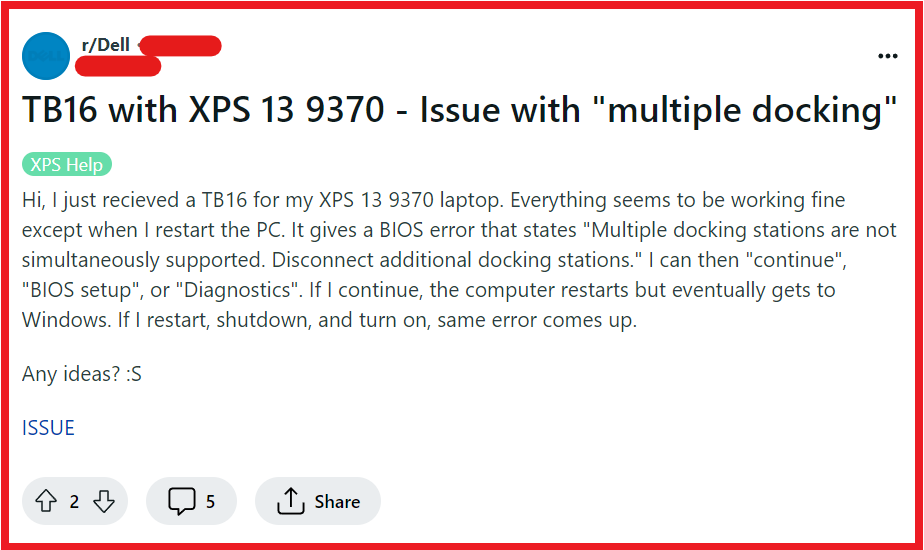Are you struggling with the inconvenience of not being able to use multiple docking stations at the same time?
This common issue can disrupt your workflow and limit the effectiveness of your workspace. However, there’s no need to worry.
In this blog, we will guide you through the steps to troubleshoot and fix the problem of multiple docking stations not being simultaneously supported.
How To Fix Multiple Docking Stations Are Not Simultaneously Supported?

To fix multiple docking stations are not Simultaneously supported, you can disconnect and power cycle your dock, reset laptop BIOS, and update docking station and laptop drivers. Additionally, you can check for hardware limitations, and disable MST (multi-stream transport).
1. Disconnect And Power Cycle Your Dock
Power cycling can resolve transient issues by clearing temporary configurations and forcing the dock and computer to re-establish their connection from scratch.
- Disconnect the docking station from your laptop and unplug it from the power source.
- Wait for 1-2 minutes.
- Reconnect the power supply to the dock.
- Reconnect the docking station to your laptop.
2. Reset Laptop BIOS
BIOS settings control the fundamental operations of your computer, and resetting them can resolve conflicts that might prevent the use of multiple docks.
- Shut down your laptop.
- Turn on the laptop and immediately press the key to enter BIOS setup (commonly F2, Del, or Esc).
- Navigate to the ‘Exit’ menu or similar.
- Select ‘Load Setup Defaults’ or ‘Restore Settings.’
- Confirm the action and save changes.
- Exit BIOS and allow the laptop to reboot.
3. Update Docking Station And Laptop Drivers
Drivers ensure that your hardware communicates effectively with your operating system; outdated drivers can lead to compatibility issues.
- Go to the manufacturer’s website for your laptop and docking station.
- Navigate to the support or downloads section.
- Find the latest drivers and firmware for your specific models.
- Download and install the updates.
- Restart your devices after installation.
4. Check For Hardware Limitations
Not all laptops or docking stations are designed to support multiple docks, and checking compatibility can save you from attempting impossible setups.
- Consult the user manual or online specifications for your laptop and docking station.
- Look for information regarding multi-dock support.
- Verify that the hardware is capable of handling multiple docking stations.
5. Disable MST (Multi-Stream Transport)
MST can interfere with the simultaneous use of multiple docks if it leads to bandwidth or compatibility issues.
- Right-click on the desktop and select ‘Display Settings’ or access the control panel for your docking station.
- Find the display configuration settings.
- Locate the MST option and disable it.
- Apply the changes and test the docking station setup.
6. Check For Software Conflicts
Software that manages docking or display settings may be set to prevent the use of multiple docks, leading to the error.
- Open the software that manages docking or display settings.
- Look for any settings that might restrict the use of multiple docks.
- Adjust or disable those settings temporarily.
- Restart your computer and check if the docks are now supported.
7. Use Compatible Docking Stations
Using docking stations from different manufacturers or models can lead to compatibility issues due to varying standards and technologies.
- Identify the make and model of your current docking stations.
- Research to confirm whether they are known to work together.
- If they are not compatible, consider acquiring matching or compatible models.
- Set up the new docking stations according to the manufacturer’s instructions.
